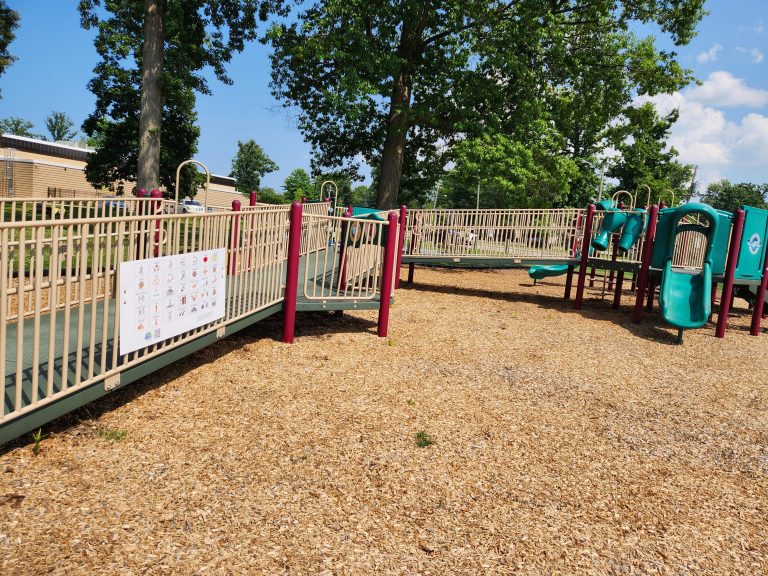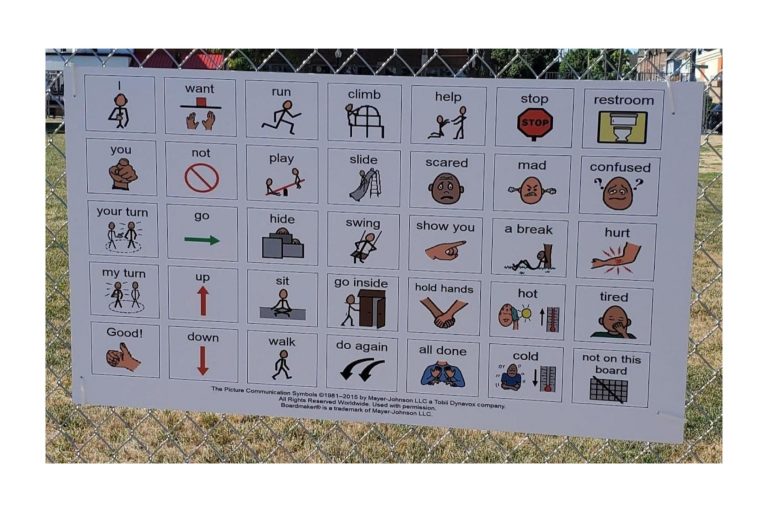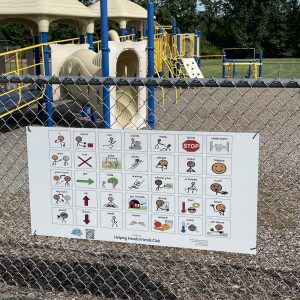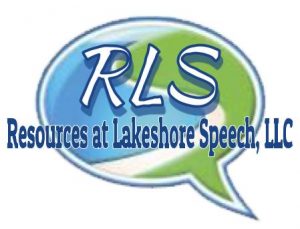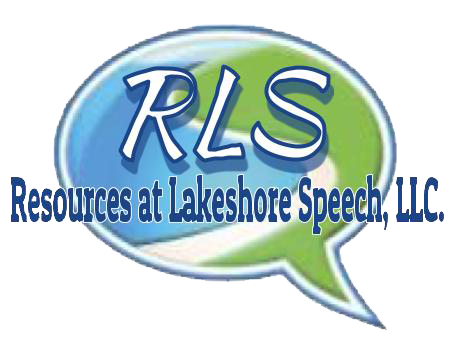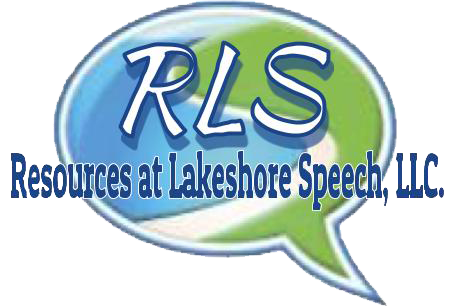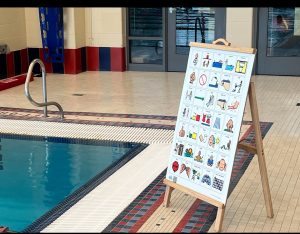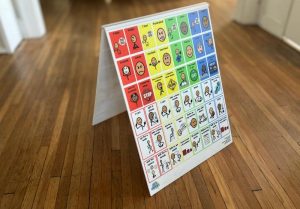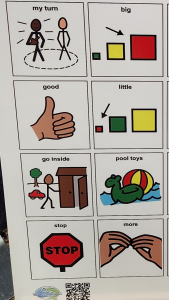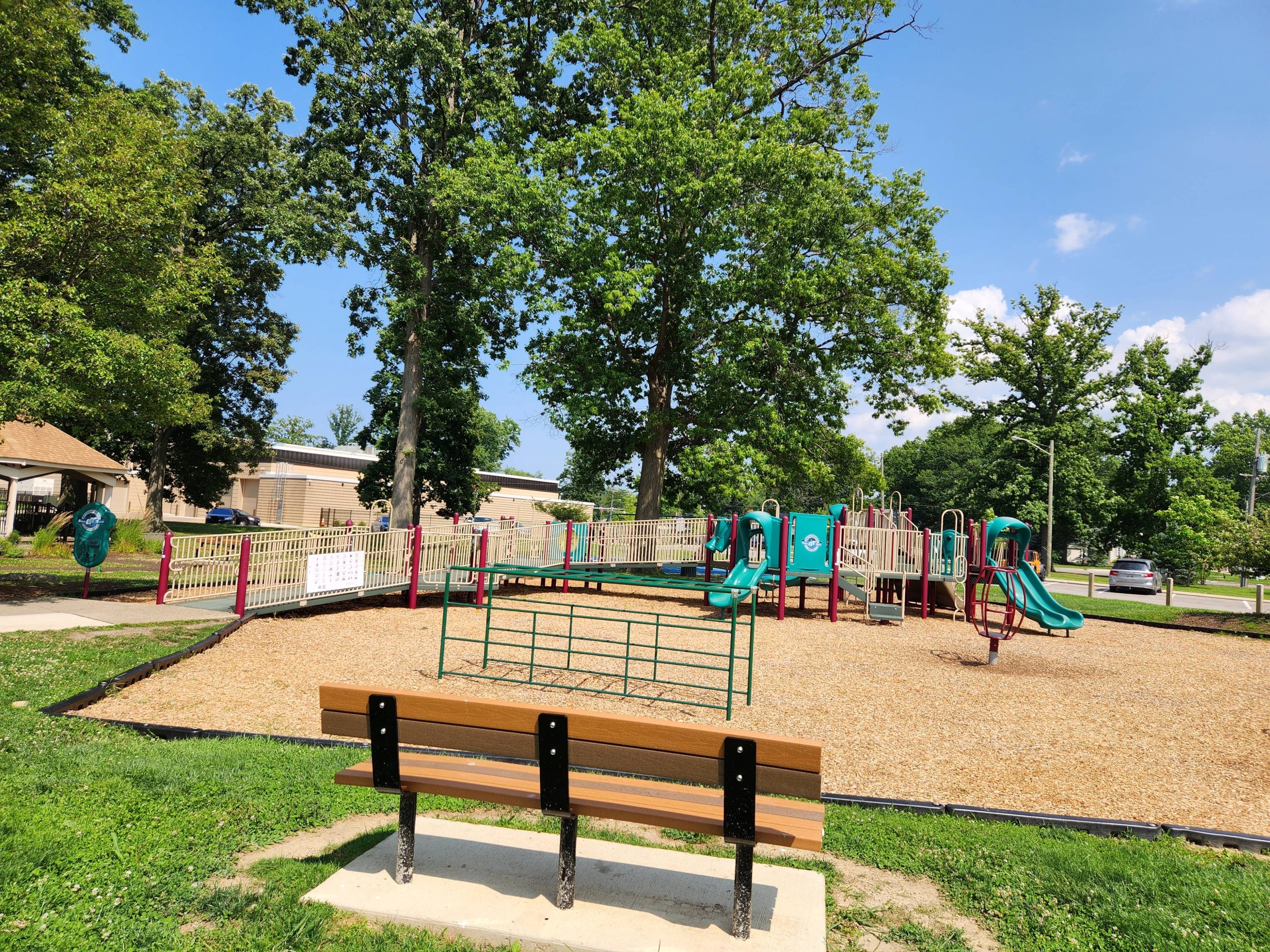
Playgrounds are supposed to be havens for laughter, exploration, and imagination. But for children with communication differences, playgrounds can sometimes feel isolating and inaccessible. While much attention has been given to physical accessibility, it’s crucial to recognize that true inclusivity goes beyond ramps and handrails—it also includes providing tools for effective communication, such as communication boards.
Understanding Communication Differences:
- Autism Spectrum Disorder (ASD): Children with ASD may process sensory information differently or struggle with social interaction. Loud noises, crowded spaces, and unclear instructions can be overwhelming. Children with ASD communicate in many different ways.
- Speech Impairments: Children who have difficulty speaking may feel frustrated on a playground where verbal communication is the norm. They may feel isolated from their peers.
- Learning Differences: Children with learning differences may have trouble understanding complex rules or following directions for games. They may respond better to having a visual representation of the expectations.
So, how can communication boards enhance playground accessibility? Let’s explore a few key ways:
Building Inclusive Play:
- Facilitating Social Interaction: Communication boards enable non-verbal children to initiate and participate in social interactions with their peers. This can lead to increased confidence and a sense of belonging, essential elements of a positive playground experience.
- Empowering Independence: By using communication boards, children can independently communicate their preferences and make choices during play. This autonomy fosters a sense of control and empowerment, which is especially important for children with disabilities.
- Supporting Emotional Expression: Playgrounds can be overwhelming for some children, particularly those with sensory sensitivities. Communication boards allow them to express their feelings and communicate when they need a break or assistance, promoting emotional well-being.
- Enhancing Safety: Effective communication is key to ensuring the safety of all children on the playground. Communication boards help children communicate potential hazards or emergencies, ensuring timely intervention by caregivers or playground staff.
By creating playgrounds that focus on all abilities, we unlock a world of benefits:
The Power of Inclusive Play:
- Social Development: Children with communication differences get the chance to interact with their peers and build friendships.
- Emotional Well-being: Inclusive play fosters a sense of belonging and reduces feelings of isolation.
- Physical Activity: Accessible equipment encourages physical activity and healthy development for all children.
- Community Building: Playgrounds become welcoming spaces for families with diverse needs, fostering a sense of community and acceptance.
- Encouraging Inclusive Play: When children see their peers using communication boards, it promotes understanding and acceptance of different communication styles. This can foster a culture of inclusivity and empathy among all playground users
Don’t overlook the importance of everyone being involved in promoting and using communication boards:
Taking Action:
- Training for Staff: Playground supervisors should receive training on recognizing and supporting children with communication differences. This can involve learning basic signs, understanding common challenges, and fostering inclusive play activities.
- Advocate for Change: Talk to your local park authorities and express the need for inclusive play equipment and programs.
- Spread Awareness: Share information about communication differences and the importance of inclusive playgrounds in your community.
By embracing the use of communication boards, playgrounds can become more than just physical spaces—they can become platforms for communication, connection, and inclusion for children of all abilities. Let’s work together to make playgrounds truly accessible to everyone, regardless of their communication abilities.
